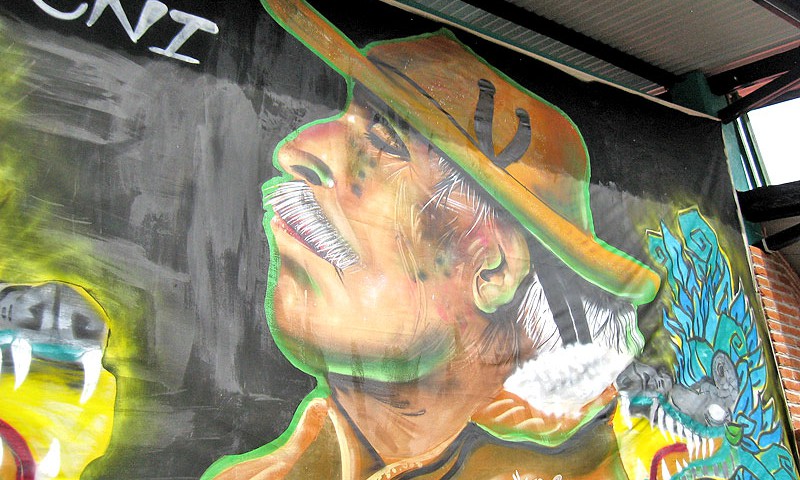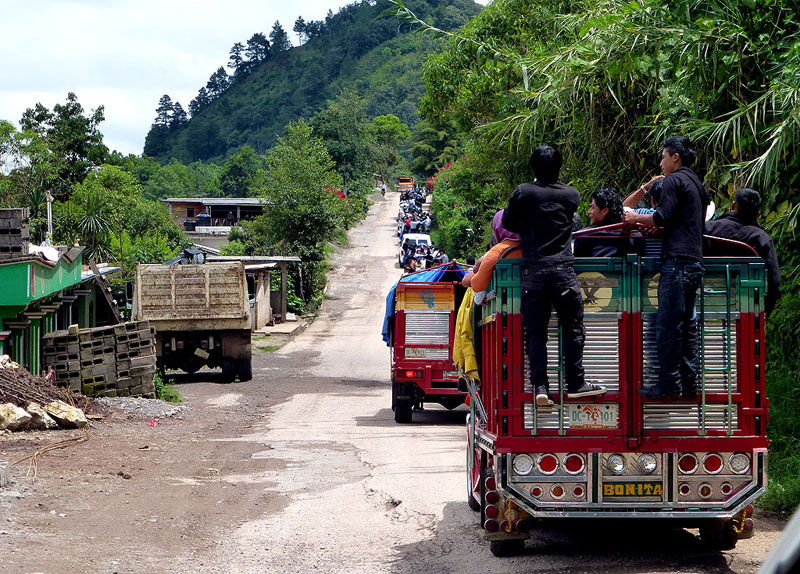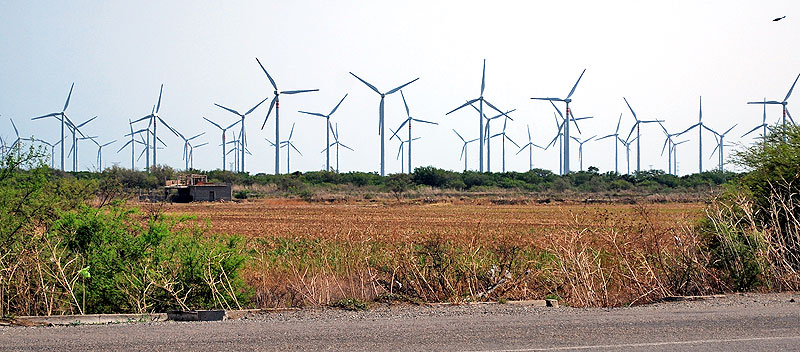
IN FOCUS : Impacts and affects of the wind-energy projects in the Tehuantepec Isthmus
04/09/2013SIPAZ ACTIVITIES (From mid-May to mid-August 2013)
04/09/2013We are the Indians who we are, peoples, Indians.
We want to continue to be the Indians we are;
We want to continue being the people we are;
We want to continue speaking the language we speak;
We want to continue thinking the thought we think;
We want to continue dreaming the dreams we dream;
We want to continue loving the loves we have;
We want now to be who we are; we want our place;
We want our history; we want the truth.
Amidst one of the most pressing global crises, indigenous peoples in resistance struggle daily against the advances of drug-traffickers, transnational corporations, and governmental strategies to privatize all public lands. The indigenous exercise of autonomy thus becomes a means of defending territory and the very identities through which indigenous peoples define themselves..
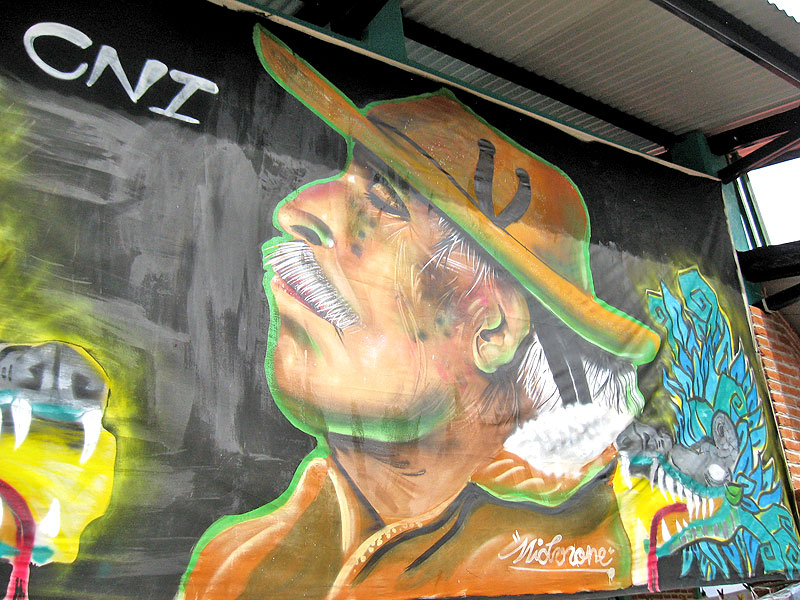
On 17 and 18 August at the Comprehensive Center for Indigenous Training (CIDECI) and University of the Earth (Unitierra) in San Cristóbal de Las Casas more than 200 delegates arrived representing communities from 19 Mexican states and some thousand others, national and international in origin, in response to the invitation made by the National Indigenous Congress (CNI) and the Zapatista Army of National Liberation (EZLN). Present at the meeting were representatives of the Yaqui, Rarámuri, Wixárika, Purépecha, Triqui, Mehpa, Nu Saavi, Ikoot, Tzeltal, Tsotsil, and Zoque peoples, in addition to EZLN support bases as well as members of the EZLN command structure.
The “Trailblazing Lectures” were presented as an opportunity to reunite the different indigenous groupings within the CNI and contribute the words of the indigenous of the American continent “from one heart” on their struggles and forms of resistance. This event was consciously associated with other sessions that were to be held in different locations throughout America, according to “geography and the schedules of the organizers and those who would attend,” following the First Meeting of Indigenous Peoples of America, held in October 2007 in Vícam, Sonora.
The goals of this latest meeting were firstly to pay homage to Tata Juan Chávez Alonso, a Purépecha social activist, “who continues to teach and guide us, and whose memory a year into his absence becomes hope and strength,” as well as to denounce the fact that “these peoples remain invisible and silenced, exterminated below radar” (Hermann Bellighausen). Over the course of the two days of the meeting, discussions regarding the meaning of struggle were shared: in Bellighausen’s depiction, these amounted to “an eloquent glossary of the experiences of those from below (the last ones, the smallest ones, the forgotten ones) within the disasters unleashed by those who rule in Mexico.”
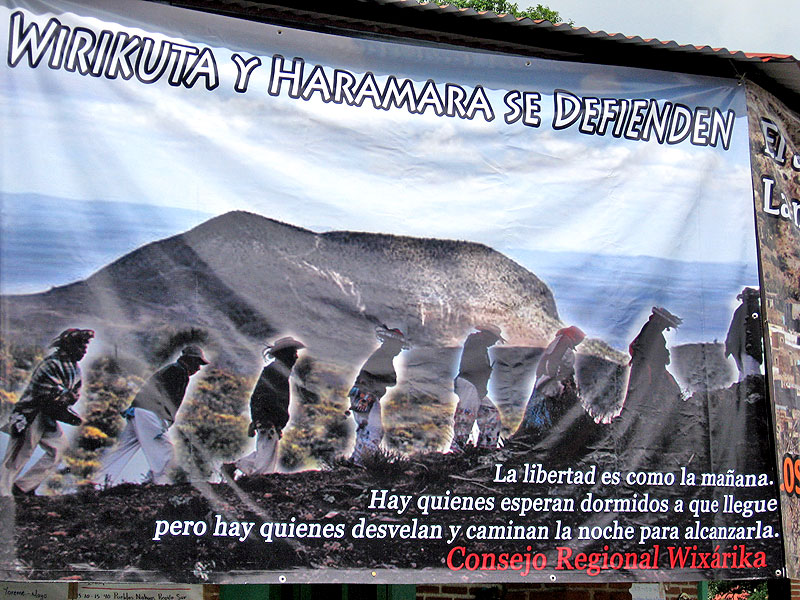
In the final declaration of the “Lectures,” the “children of Mother Earth” principally denounce four threats against their communities and peoples: organized crime, transnational firms, mining concessions, and political parties. “We have learned on this path of struggle that the powerful have no respect for their word, which they betray and violate time and again,” declares the document, which communicates 29 concrete demands. The first such demand calls for the “immediate release of all political prisoners in our country, particularly that of our Tsotsil indigenous comrade Alberto Patishtán.” The declaration also affirms that “the bad governments and transnational firms” employ “paramilitary groups to impose extractive megaprojects.” While demanding the halting of repression directed against those who defend the rights of the indigenous and of the land, the declaration also anticipates an end to the looting and devastation to which ejidal and communal territory is subjected and respect for communal economies “which function autonomously at the margin for the free market of capitalism.” The CNI identified that presently there is seen “an unprecedented attack on the sacred foundations of the world as recognized and upheld by indigenous peoples, who doubtlessly defend the name of life within the very universe.”
International representatives of peoples from Guatemala, Peru, and Colombia also participated, thus sharing their experiences with work and autonomy. A delegation from the General Command of the EZLN, led by Subcomandante Moisés and Commander Tacho, closed the event. Commander Miriam, representing the EZLN, said that the Zapatistas have taken on the struggle to defend indigenous lands which are threatened by the government and transnational corporations “without regard for the consequences, because we live from our Mother Earth; she gives us to breathe.” Commander Miriam added that “the bad governors should know clearly that we will not give up,” just because “the bad government and transnational companies desire to take control of what is ours; when we defend ourselves, they persecute us, they incarcerate us.” Lastly, “so as to reject all death-projects imposed by the neoliberals, it is necessary to self-organize; unite our forces, pain, and rebelliousness; and struggle for democracy, freedom, and justice.”
The CNI emerged in 1996 from within the National Indigenous Forum as a meeting space and broad front representing indigenous peoples. As Raúl Zibechi describes, “Revolutionary processes are contagious,” and this latest meeting providing the inspiring space to make visible the work of indigenous peoples who share similar experiences of struggle and common “enemies.” The “path-finders” who visited the CIDECI on this occasion left the event with their hearts strengthened; hopefully this new CNI initiative will lead to greater numbers of creative, organized efforts on the part of peoples in resistance seeking autonomy.

